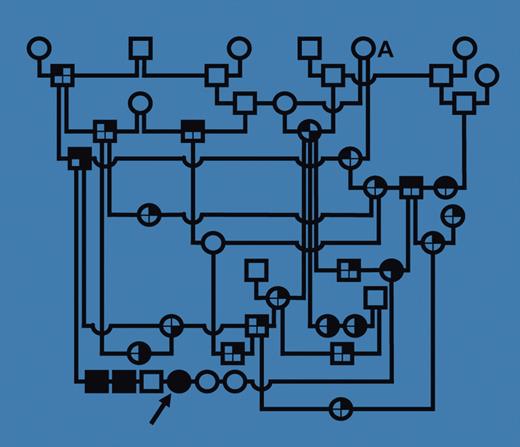Comment on He et al, page 1447
He and colleagues demonstrate that in 2 canine models of Imerslund-Gräsbeck syndrome (hereditary megaloblastic anemia, I-GS, megaloblastic anemia 1 [MGA1]; Online Mendelian Inheritance in Man [OMIM] no. 2610011 ), the disease is caused by mutations in the Amn gene, and that these dog models can serve as orthologues of the human disease.
I-GS is characterized by selective vitamin B12 (cobalamin, Cbl) malabsorption, low serum levels of cobalamin, normal levels of intrinsic factor (IF), and often, proteinuria. The Schilling test is abnormal with and without IF, characteristic of a defect of absorption of the IF-Cbl complex, at the level of the distal ileum. Mutations in the cubilin (CUBN) gene on chromosome 10p12.12 and in the amnionless (AMN) gene on chromosome 14q323 have been found in patients with I-GS. Studies have shown colocalization of cubilin and amnionless in the apical membranes and endocytic apparatus of renal proximal tubule cells and suggested that the 2 gene products interact to form a functional complex, “cubam.”4 FIG1
I-GS segregating in an Australian shepherd dog pedigree. See the complete figure in the article beginning on page 1447.
I-GS segregating in an Australian shepherd dog pedigree. See the complete figure in the article beginning on page 1447.
The authors of the current paper show that in one dog kindred there is a deletion of 33 nucleotides in exon 10 of Amn, whereas in the second kindred, there is a mutation disrupting translation initiation (see figure).
In addition, whereas Cubn and Amn share expression in many tissues, Amn but not Cubn cDNA is expressed in canine colon, liver, pancreas, and pituitary and that Cubn but not Amn cDNA is expressed in placenta. The clinical significance of these different patterns of tissue expression remains to be discovered. This finding is of potential importance since, in rodents, both amnionless and cubilin are implicated in early embryonic development.
Using antiserum raised against an extracellular domain peptide of canine amnionless, He et al detect 3 immunospecific proteins in renal cortex membranes by Western blotting. Work remains to be done to determine whether the shorter proteins represent posttranslational or postendocytic modifications, or simply nonspecific ex vivo proteolysis.
Finally, the authors show that cubilin, when expressed in Chinese hamster ovary cells in the absence of a functional amnionless protein, does not progress through the biosynthetic pathway and does not reach the cell surface. They suggest that this implies that cubilin and amnionless interact in the endoplasmic reticulum for protein stability, allowing the cubam complex to exit the endoplasmic reticulum, and target to the apical membrane.
These studies once again demonstrate the value of comparative biology and model animal systems in elucidating the mechanism of human disease, and in showing the ever-increasing complexity of vitamin B12 absorption. Although it has been studied for many years, we continue to learn more about this important vitamin. Indeed it is possible to teach an old dog new tricks. ▪


This feature is available to Subscribers Only
Sign In or Create an Account Close Modal